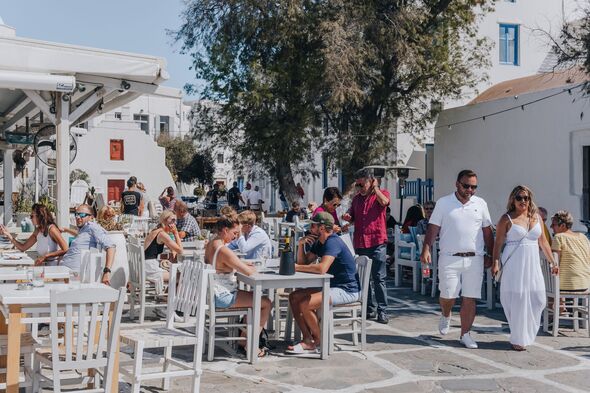A new study has revealed Greece to be one of the most overexposed destinations in Europe to tourism, particularly the incredibly popular islands of Santorini and Mykonos in the Aegean Sea.
The first “Overtourism Index”, carried out by the sustainable travel platform Evaneos and the consultancy Roland Berger, analyses 70 of the most frequented holiday destinations in the world and seeks to evaluate their level of exposure to visitors.
Its findings revealed that Greece is one of the most overexposed to tourism and, for this reason, the platform has decided to eliminate Mykonos and Santorini from its offer from 2025 until further notice, according to Europa Press.
Despite being among the best-selling trips on the platform, the decision to remove the islands from the catalogue during the summer was taken in conjunction with local Evaneos agencies. It comes as a huge blow to the hundreds of thousands of UK tourists who frequent the beautiful Greek archipelago every year.
These agencies know the pressure that overtourism puts on ecosystems and scarce resources including water between July and August first hand.
With Instagram-perfect sunsets, Santorini is known as one of the most beautiful places in the world. Every year, around 3.4 million tourists descend on the 28-square-mile island, all fighting for the best spots for photographs of the iconic view.
As a result, however, the island has been the victim of crowds, congested sites, dirt, noise, high prices, the degradation of nature, pollution and new construction. In June, 17,000 tourists descended on the island via cruise ship in one day, with residents asked to limit their movements in an unprecedented announcement made by a councillor of the island in a now deleted Facebook post.
“Armed with selfie sticks and phones, the tourists flood into Santorini from everywhere,” reports Reuters. “On dinghies from giant ocean liners, on coaches that zigzag up the steep hillsides, atop donkeys that clip-clop along the narrow cobbled streets.”
The removal of the islands seeks to better balance tourist flows and to distribute stays to the months of June and September.
“The purpose of our model is to offer an alternative based on sustainable tourism and an authentic experience. Unfortunately, visiting Mykonos and Santorini during the summer does not meet any of these criteria,” stresses Aurélie Sandler, co-CEO of Evaneos.
The platform has drawn up an action plan together with local agencies in the region, which includes the promotion of alternative itineraries such as the Peloponnese or mainland Greece.
“Far from pointing the finger at these destinations, the aim of this strategy is to encourage and support local agents so that they can offer a more positive experience for travellers,” adds Sandler.
The study also revealed that Spain leads the Overtourism Index with a score of 3.6 out of five, together with Italy, France and Portugal. While the major European destinations can accommodate a high density of tourists, they endure a particularly high flow during the summer in a large part of their territory: up to 43 percent of visitor arrivals are concentrated in the third quarter – June, July and August – in these countries.
“These destinations need, first of all, to implement measures to de-seasonalise arrivals, promoting these destinations in spring or autumn, which would allow a better distribution of tourists over time.
“This requires raising awareness among travellers about the problem of overtourism and for tourism players to act with offers that are more sensitive to seasonal pressure,” said Sandler.
